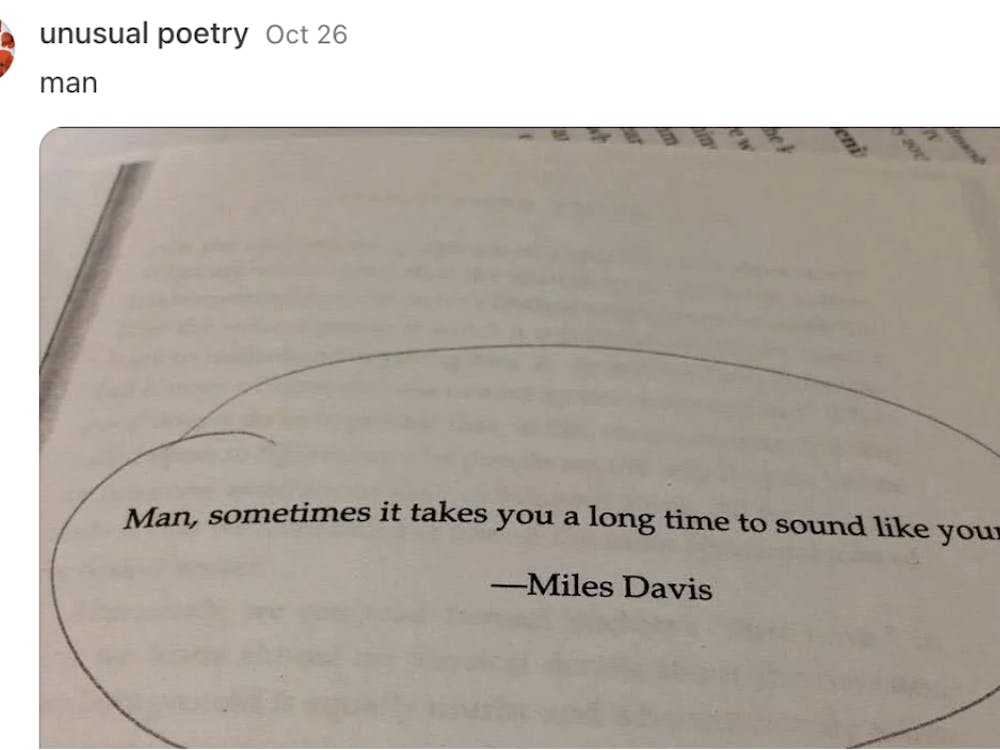With the current coronavirus shutdown, ongoing development initiatives of our Hopkins community have been considerably challenged. Despite these hardships, it is important that we don’t forget the vibrant campus we once enjoyed and the progress that still needs to be made to build an even stronger community at Hopkins.
Having seen a marked increase in student anxiety and stress due to academics over the past months, I would like to propose a couple of changes to the academic system. The opinions stated below are mine alone. They are not intended to place blame on any group or person, but rather to provide a student perspective and align all levels of our community for universal betterment.
The first student concern I would like to address is toward course-specific grading scales. There are currently courses where exam averages are withheld, averages are significantly lower than the universally accepted grading scale (100-97 is an A+, 97-93 is an A, and so on) or grading is based on the performance of the top few scorers. At the end of the semester, all this information is digested into a final letter grade. Determining letter grades from these esoteric criteria not only seems poorly organized and unfair to students from a transparency perspective, but also like a superfluous level of work for instructors to determine at the end of each semester.
I believe course specific grading systems would benefit from a more standardized and transparent model. Every class should provide previous years’ distribution data at the beginning of the semester and create a raw percentage to letter grade (for example, 75-70 is an A-) based on this data. For years with tougher grading, exams or course changes, the scale would also need a degree of flexibility, so that students wouldn’t compete with distributions from easier exams.
Posting this information and establishing this precedent puts students and professors on the same page regarding grading expectations. Students won’t have to carry the stress of a 58 percent raw score on an exam through the semester if they know that previous classes performed similarly. In fact, without this burden, they could concentrate more on the learning of material than on trying to achieve a certain grade.
The second student concern that I would like to address is a lack of information on future courses. This is especially important in four year course planning.
Right now, course evaluation systems provide monotonous information that doesn’t provide students with a good sense of what they should be prepared for in a future class. A remedy to this might be providing more specific questions. Examples include: “How many hours did you spend a week outside of class? What were your two favorite units/topics to learn about? What did you find was most helpful or useful in preparation for assignments/exams?” These questions provide a much clearer picture of what the course is like on a weekly basis, why the course is worth taking and what future students could focus on to succeed.
As an alternative, I suggest that courses provide the previous year’s syllabus on SIS. I believe this would give students valuable information for a course beforehand while professors update current syllabi. Structural changes such as a portal that groups classes based on department or an extension on SIS course descriptions would also improve awareness and ease of use of this valuable tool compared to the current 300-page PDFs.
Student feedback is also a large part of course evaluations. However, providing feedback after course completion feels like a largely philanthropic effort.
Students should be given the opportunity to provide feedback during the semester without having to directly and individually speak with professors during office hours. I advocate for the creation of a quick, non-mandatory mid-semester course feedback form that would provide students and professors with the infrastructure to improve the course while it is in session.
This would serve not to change course structure, but to enhance it. Some courses have excellent lectures or in-class worksheets, yet don’t record or post them on Blackboard. Other courses have poor lectures with too much information or errors in each slide. These shortcomings should be addressed sooner rather than later, so that students can see their own feedback in action and courses reach a universal quality standard straight away rather than retrospectively.
The third concern I would like to shed light on is the need for a universal teaching method. For introductory level courses especially, some professors don’t seem well trained in basic tools like Blackboard or Panopto. Some expect students to have previous knowledge of class content through AP courses, putting students without these backgrounds at a disadvantage. Teaching assistant (TA) sections aren’t adequately organized or standardized, with some TAs providing supplementary lectures that put their students ahead with the exam, while others simply have a quick Q&A session. Perhaps professors aren’t aware of these disparities or are simply unable to address them on top of their arduous workload.
Moving toward a universal teaching method for all lower-level undergraduate classes would address these issues for students and professors alike. First and foremost, learning mediums such as Blackboard, Panopto, Piazza and others need to be more organized and useful. At its core, lectures are auspicious for bringing content to life: drawing connections, considering real-world examples and answering questions. However, most students need to build foundational knowledge beforehand and are even recommended to spend three hours per credit hour of class on Blackboard and other online platforms.
To promote effective foundational learning, Blackboard should contain every salient reading, practice, answer key and recorded lecture on a weekly basis for students to refer to throughout the semester. In addition, each week should be itemized with a consistent and reasonable workload, so that students can learn to adjust their studying efforts each week and aren’t overwhelmed with information that isn’t reinforced in lecture. Reinforcing the foundation in this manner not only improves student performance, but also allows professors to teach beyond the foundation during lectures. It also adds the flavor that makes a course and professor exciting.
Some may argue that this is too much additional work for professors or that they would prefer to teach upper-level classes anyway where they can focus on the field that they are heading. Given the research orientation of this University, I can’t deny this perspective. If it is truly too difficult to maintain this proposed universal structure for lower-level courses, I would advocate that the University recruit professors with more experience in teaching than research for these courses. Lower-level courses are the most important to get right because they set the foundation for upper-level courses and future careers that professors and students alike seem to share more passion for. It is essential that their instructors either have a passion for teaching or are given a universal structure to maintain course quality.
Even with these concerns, I would like to express my gratitude to the countless professors that have challenged and inspired me to think creatively. Our education is the core of our experience at Hopkins and oftentimes has a big impact on student mental health. Through standardized grading scales, improvements to course evaluations and universal teaching initiatives for lower-level undergraduates, there will be more transparency and communication between professors and students. Ultimately, I hope that implementing these methods will help our community grow more interconnected and feel a greater sense of academic fulfillment.
Veda Chanda is a sophomore Public Health and Molecular and Cellular Biology major from Hershey, Pa.





